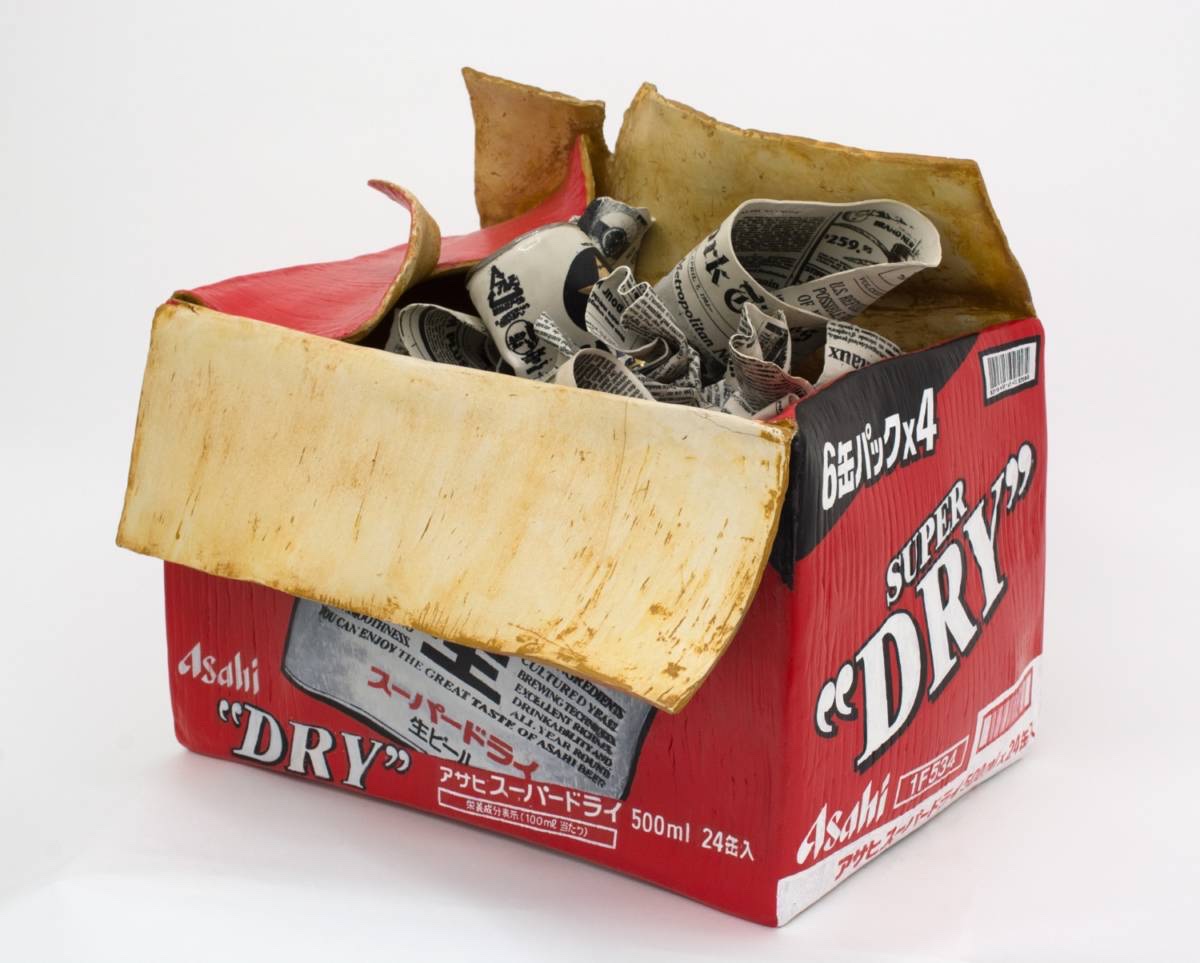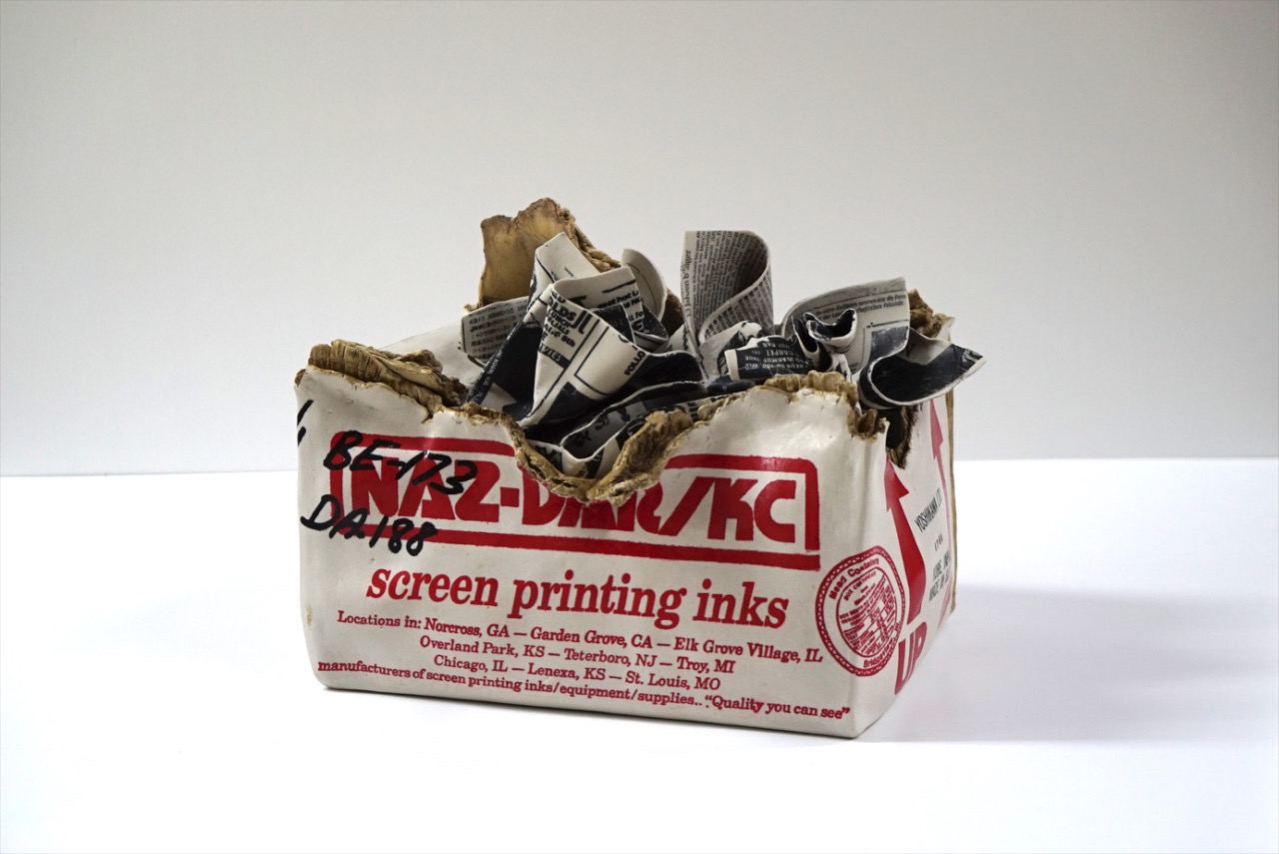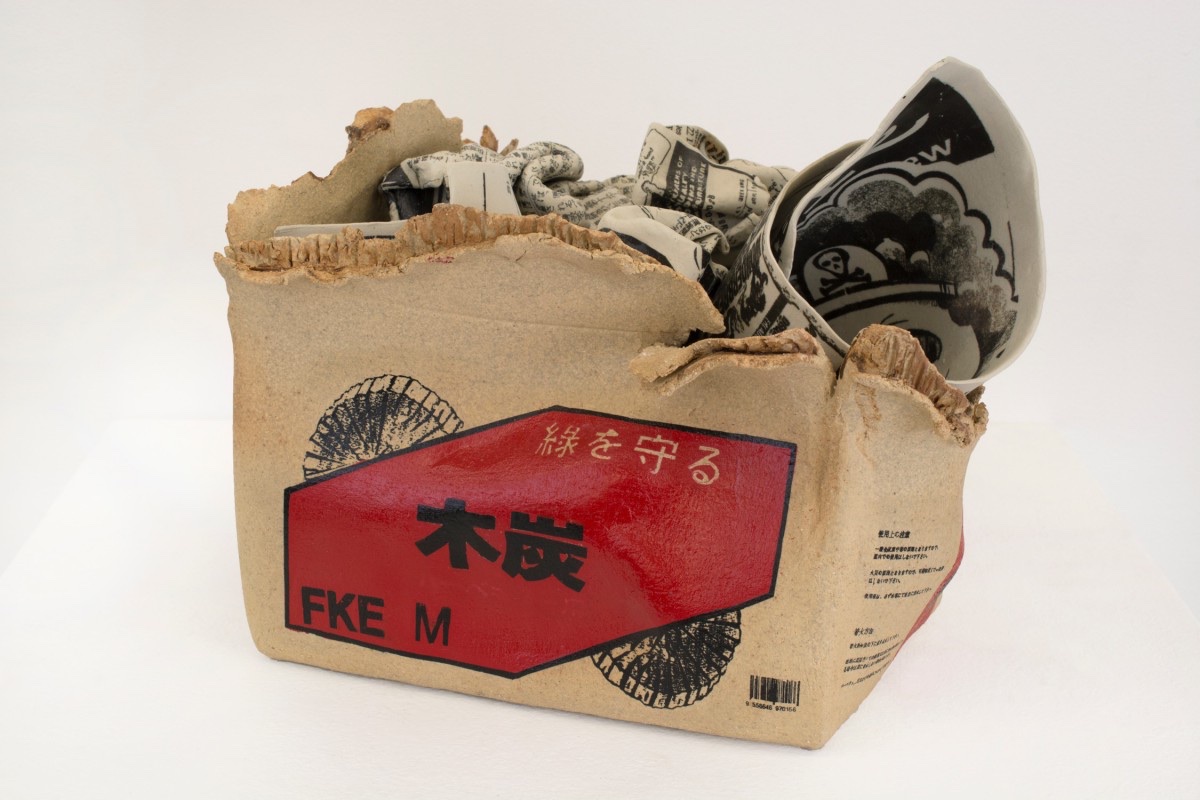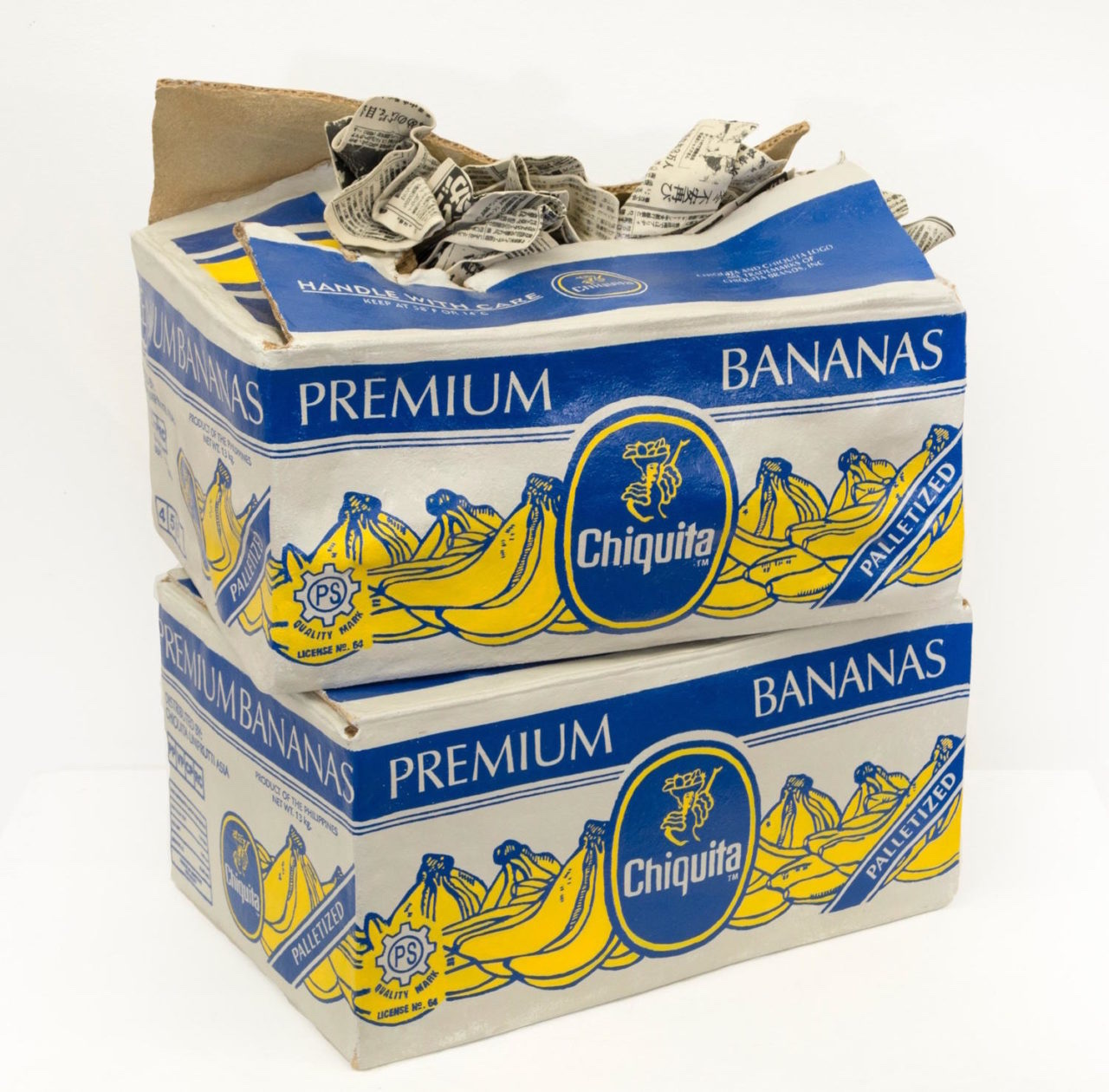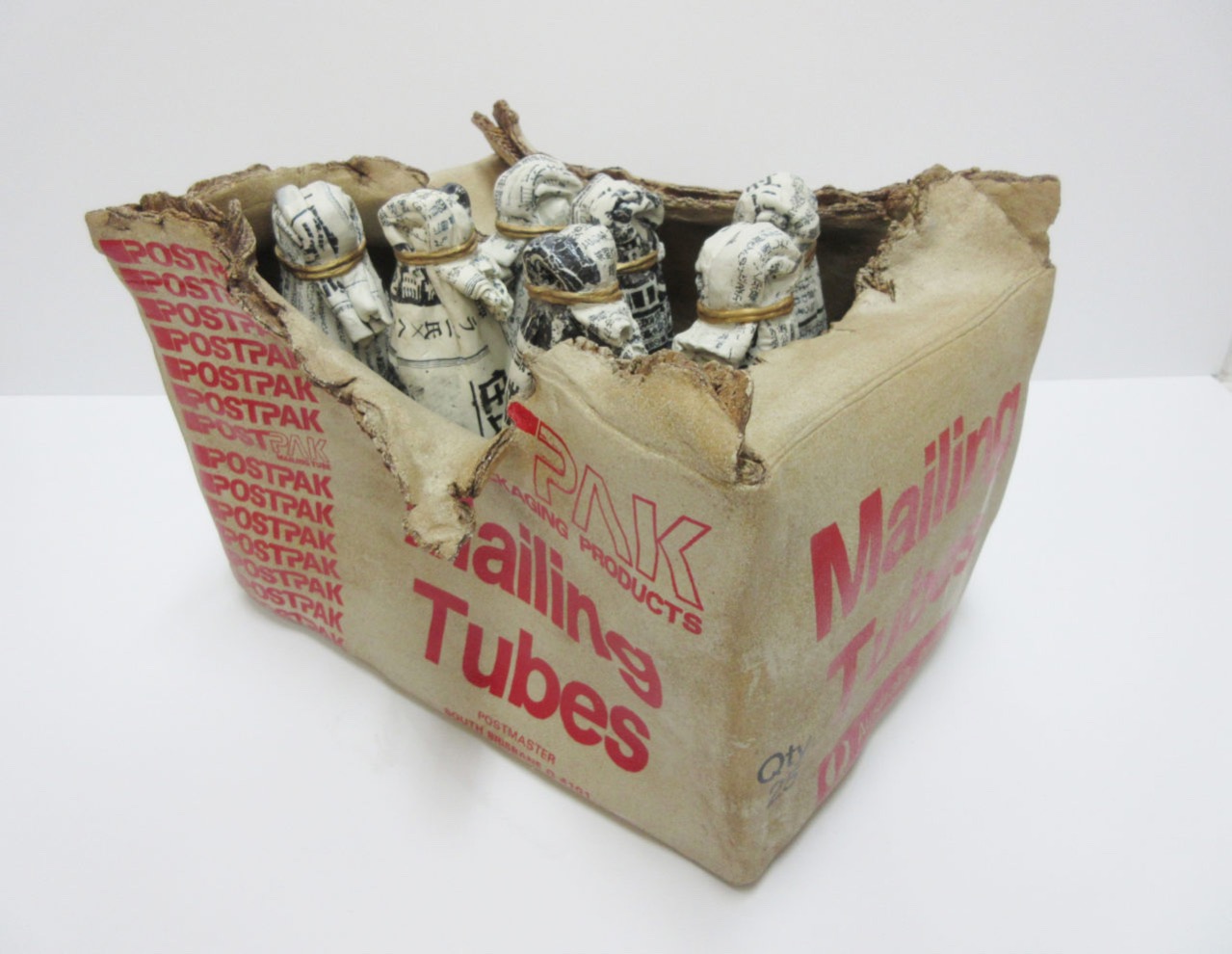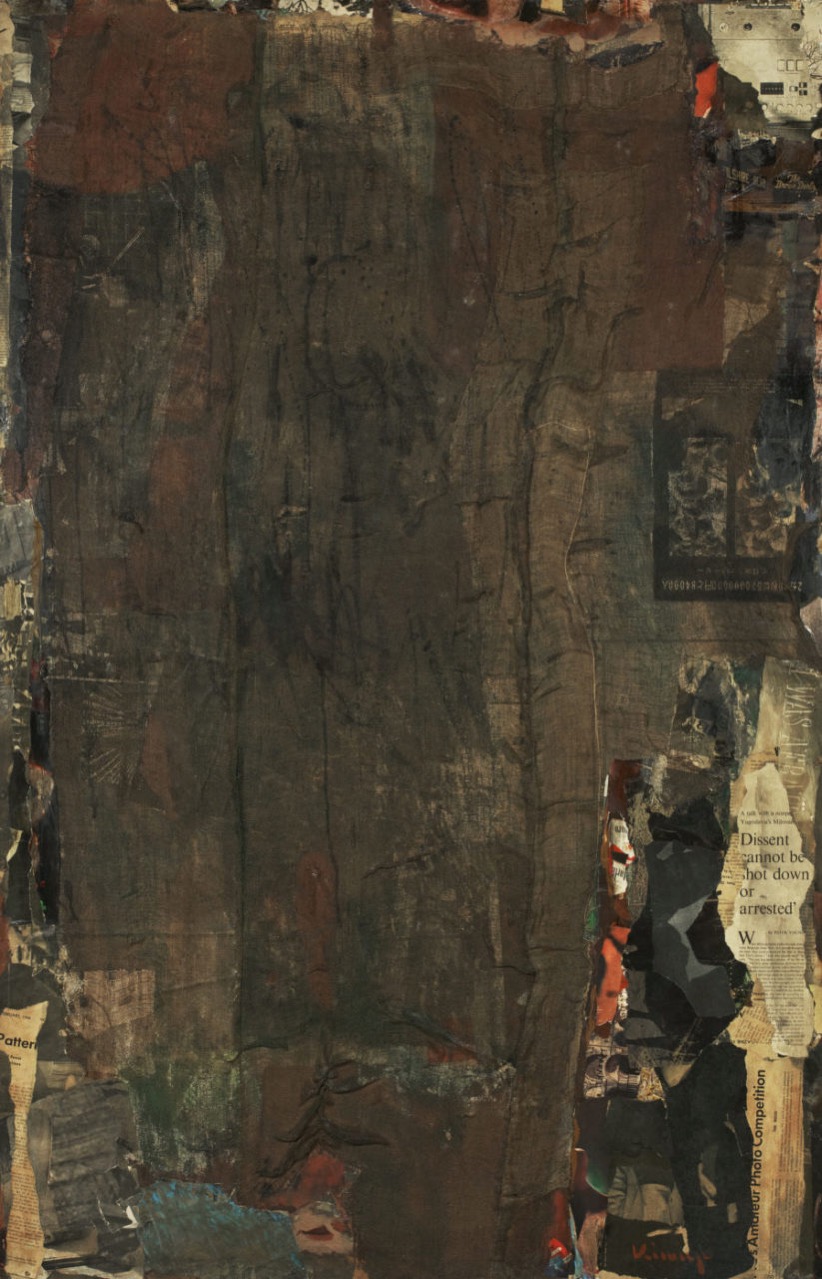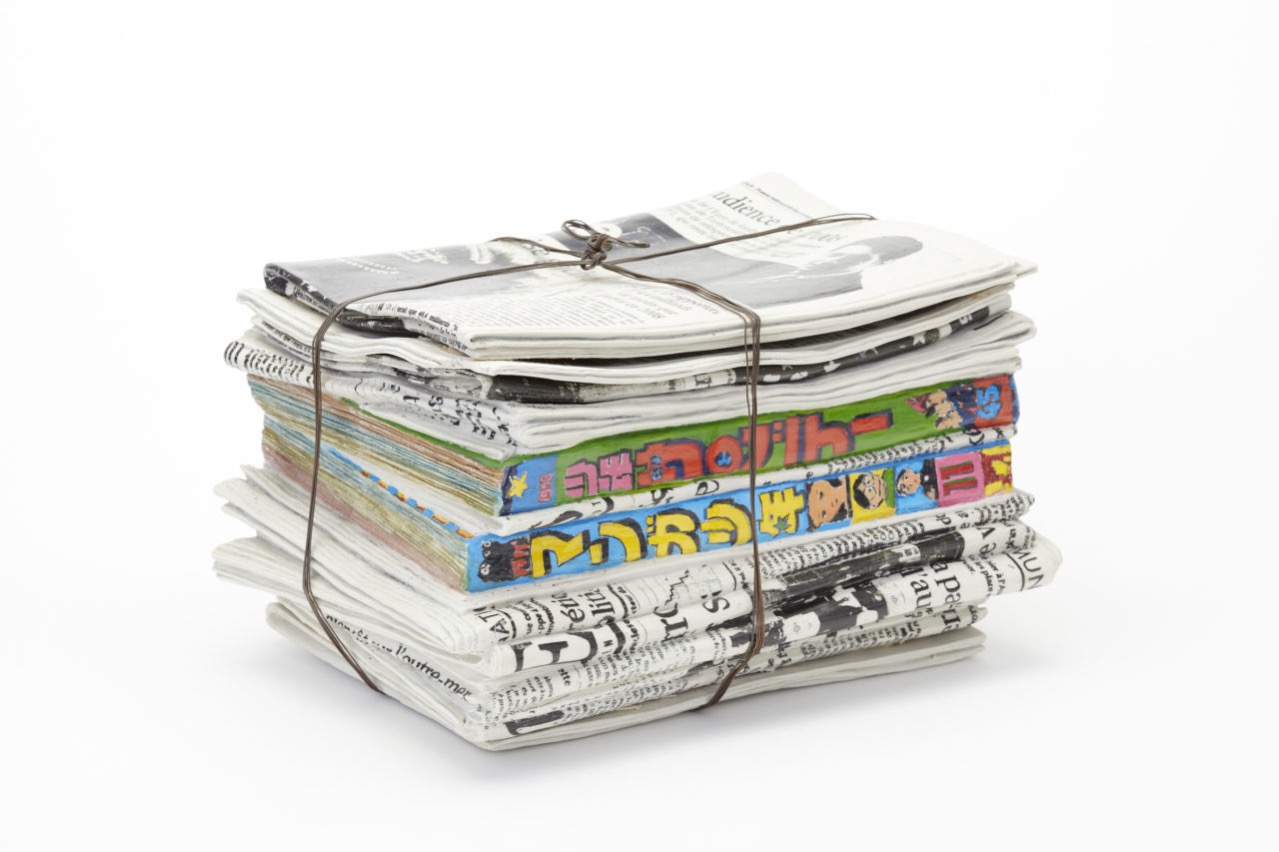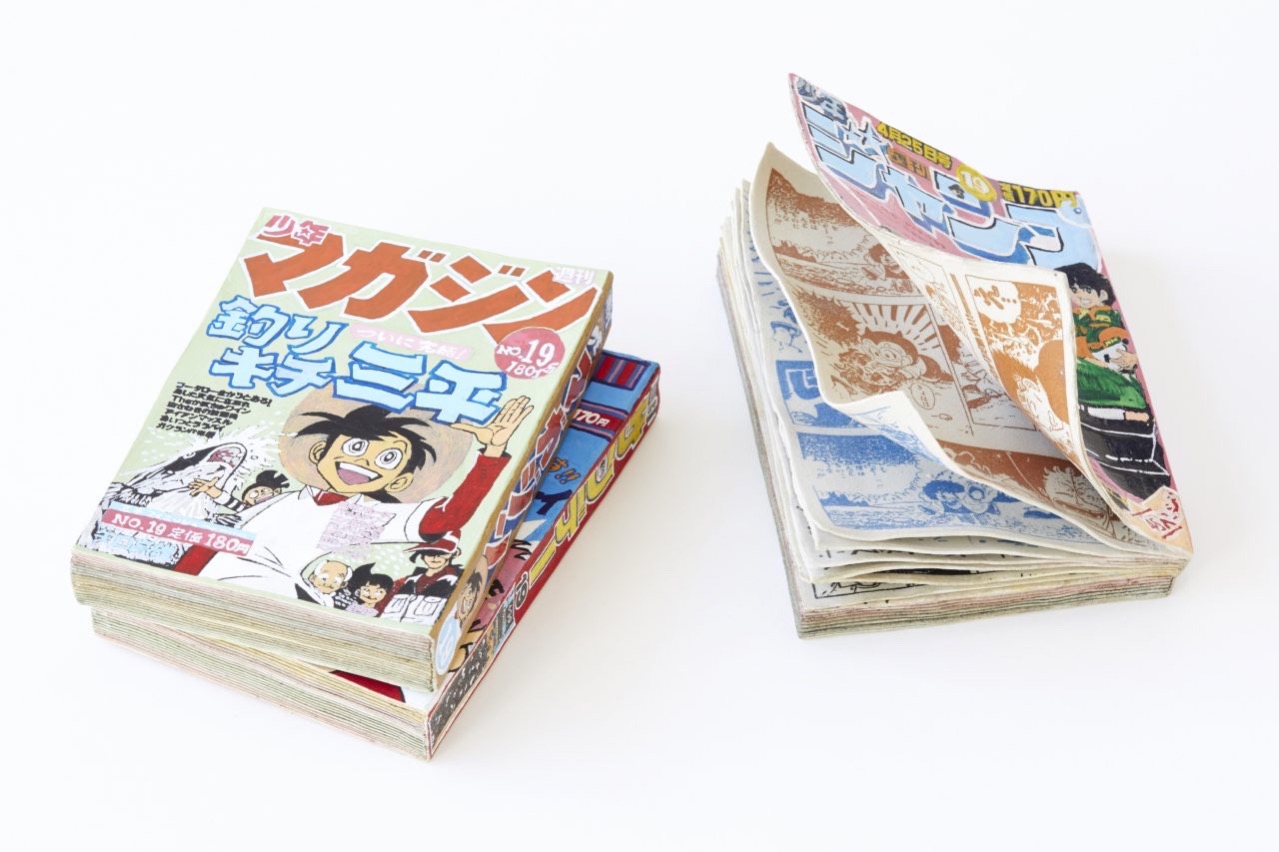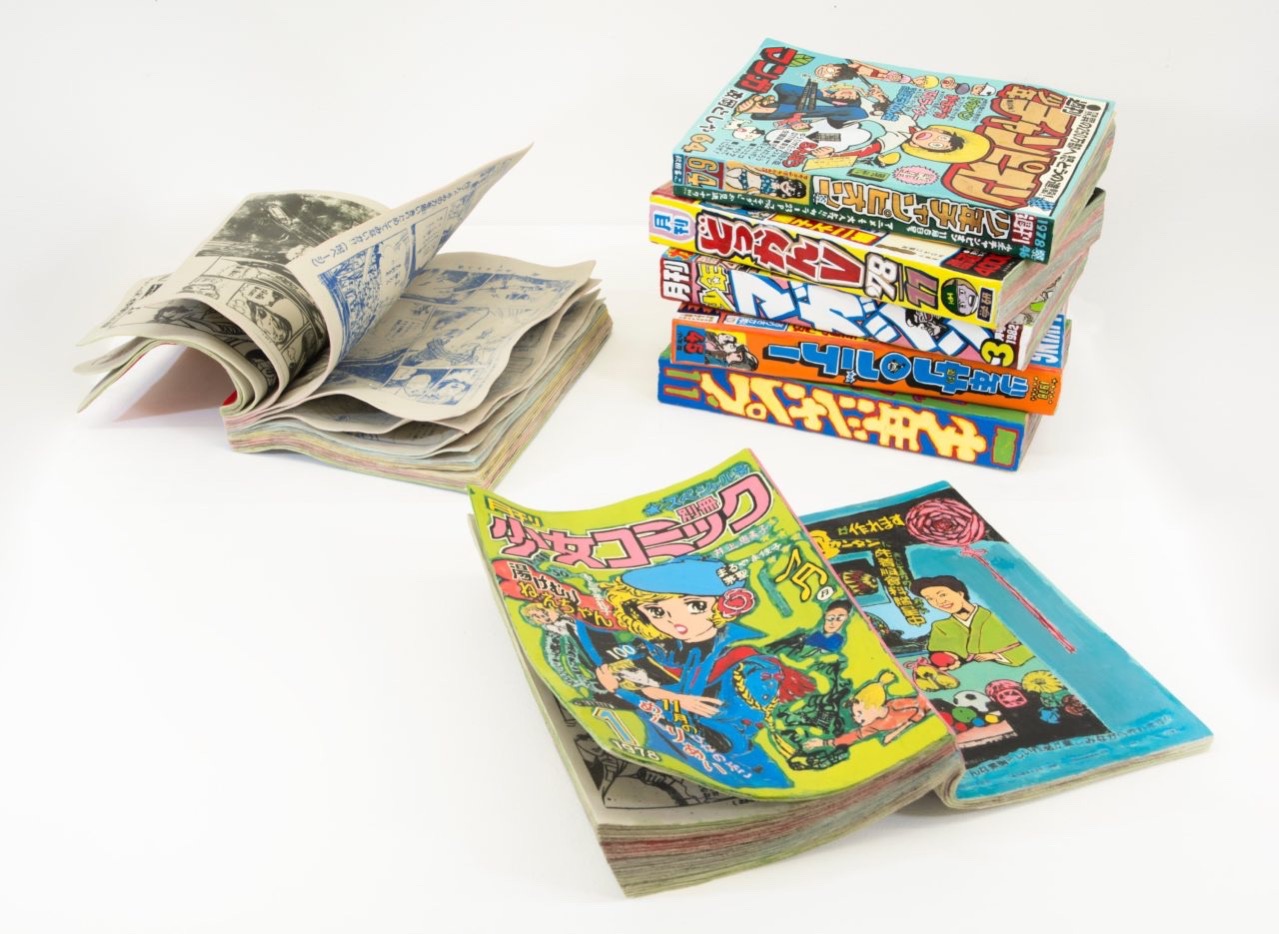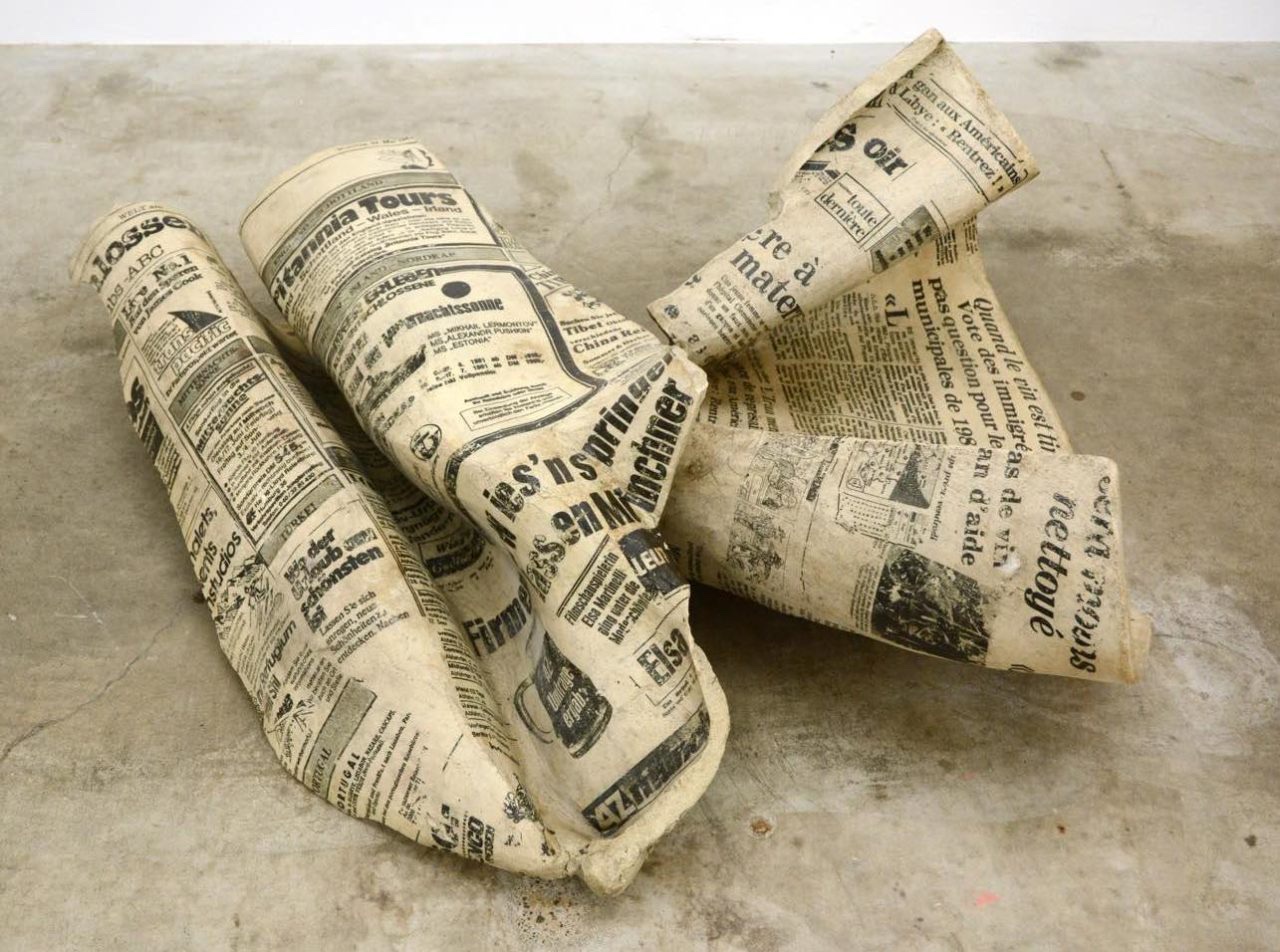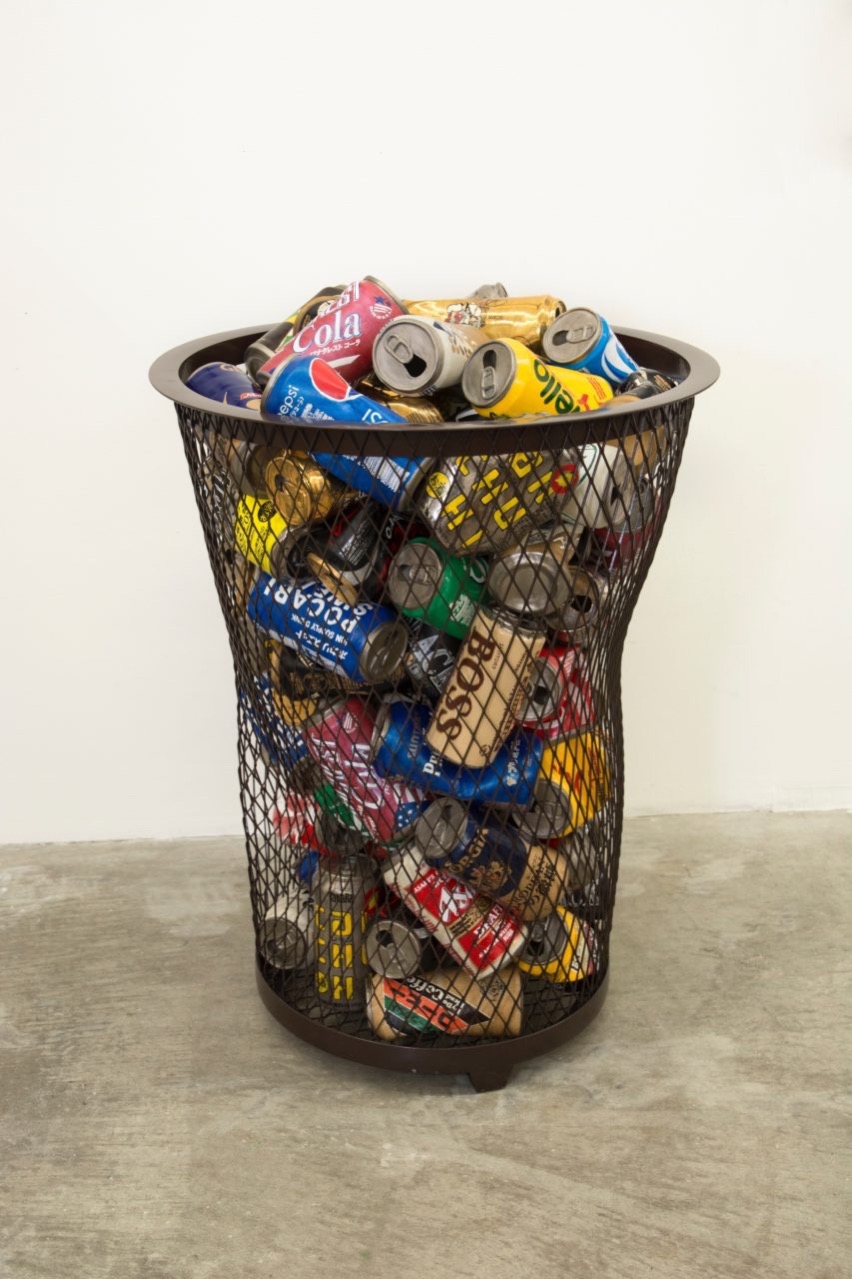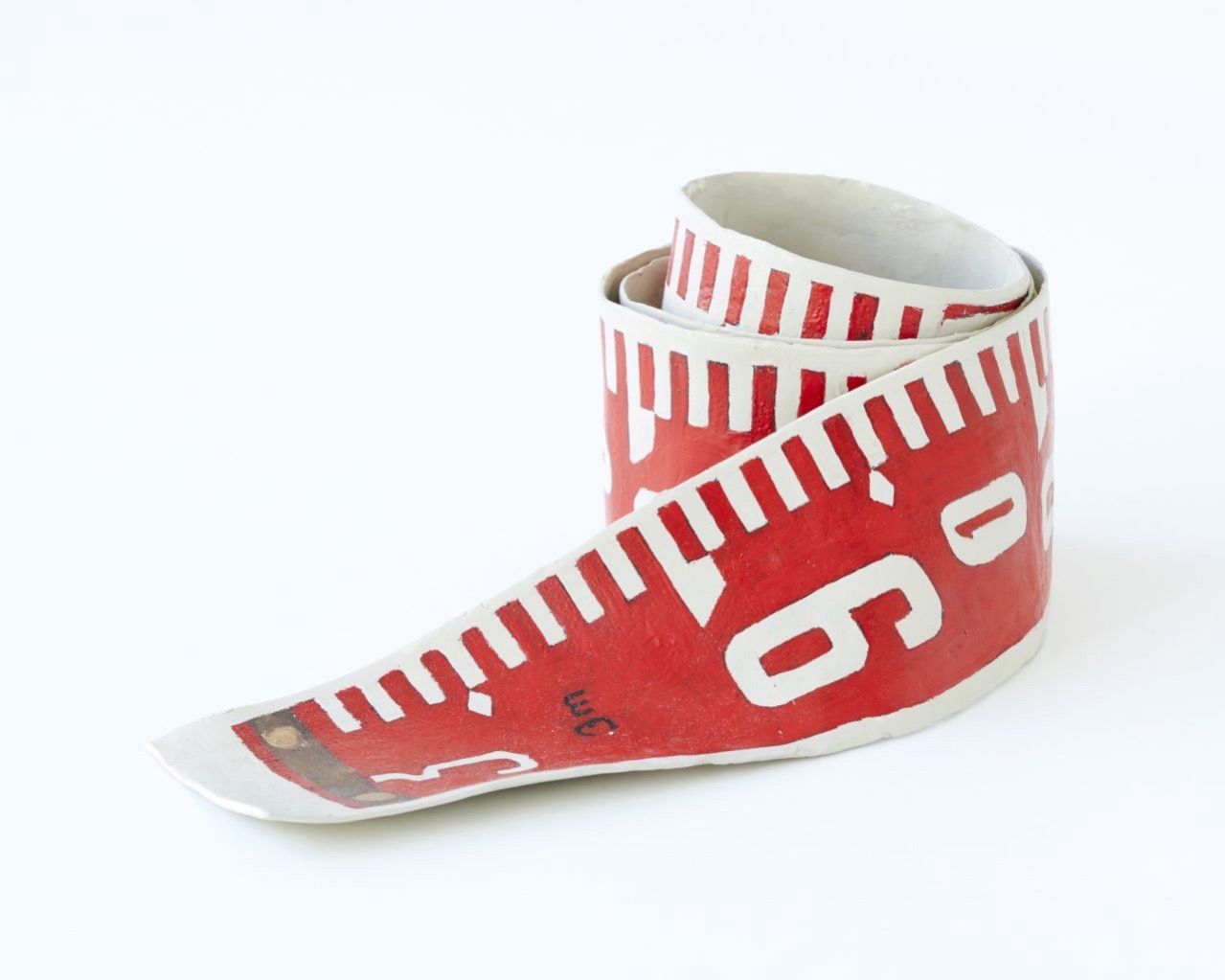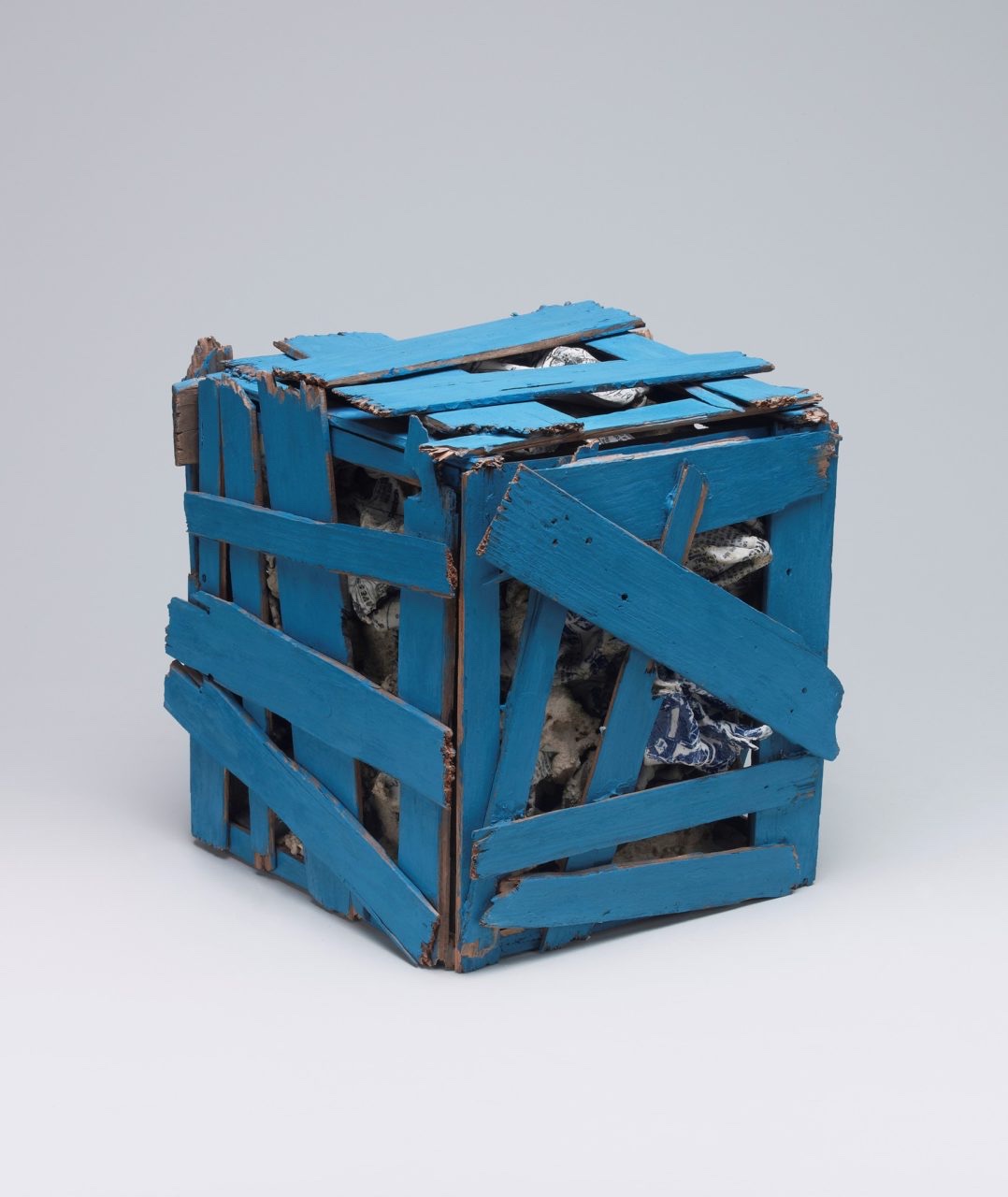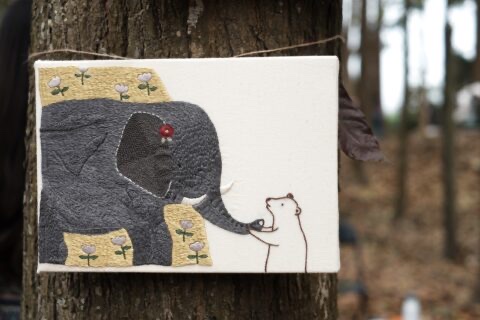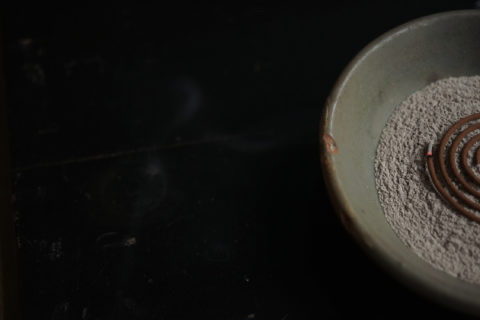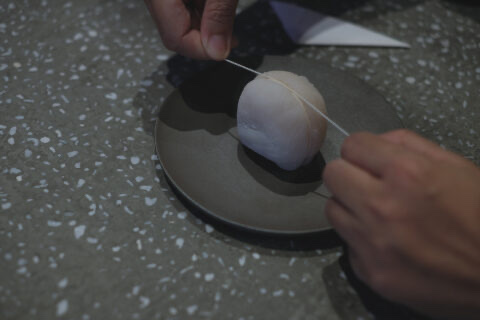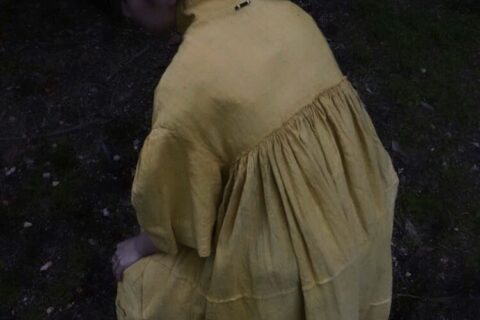
Roy Lichtenstein某天收到一個紙皮箱,是另一位藝術家寄來的禮物,他打開後先是一呆,然後便忍唆不禁了。他給那位藝術家寄了答謝信,內容是這樣的:「打開紙箱後,又是一個紙箱,我嚇了一跳呢。」收信人是三島喜美代,當年她給送Lichtenstein是她的陶藝作品,紙箱型的,太迫真,把Lichtenstein弄得一時糊塗了。
One day, Roy Lichtenstein unexpectedly received a package sent by another artist. His surprise was soon overtaken by laughter. In his thank you letter to this artist, he wrote, “I opened the box just to find another box laying inside. It was such a surprise.” The letter was addressed to Kimiyo Mishima, the artist who sent him the box-shaped ceramic work that looked so real and puzzled Lichtenstein.
現年已經86歲的三島喜美代,近年來還是創作不斷,在京都及東京的藝廊,都偶爾能看到她的個展。在1970年代以前,她專注於繪畫,把宣傳單張、報紙、雜誌的內頁作拼貼,融入在作品之中,形成她獨特的風格。雖然漸受注目,但她內心仍感不足。「1960年代,經常會聽到『情報、情報』這字眼。是報紙及雜誌蜂湧而出的世代,我的作品大概是反映當時的情況吧。那時我經濟拮据,卻被隨著百貨公司減價的宣傳單張、新聞及雜誌而來的情報所淹沒,感到很不安又充滿了危機感。」在一次訪問中,三島喜美代說。
她想透過拼貼畫來舒發這份不安,然而不管如何努力,都無法滿足,直到她注意到被紮得整整齊齊地丟棄的報紙。日本人習慣把家裡的報紙儲至一定的數量,才以尼龍繩紮起,在回收日時放在家門前等待收集車的到來。那些報紙堆原是尋常不過的風景,但看在三島喜美代的眼裡有著無比的存在感。單薄的陶器是脆弱的,觸踫時教人感不安,而堆放在一起,又或厚重的陶器,則有著無形的力量,她感到陶器就是她一直在尋找的媒介。
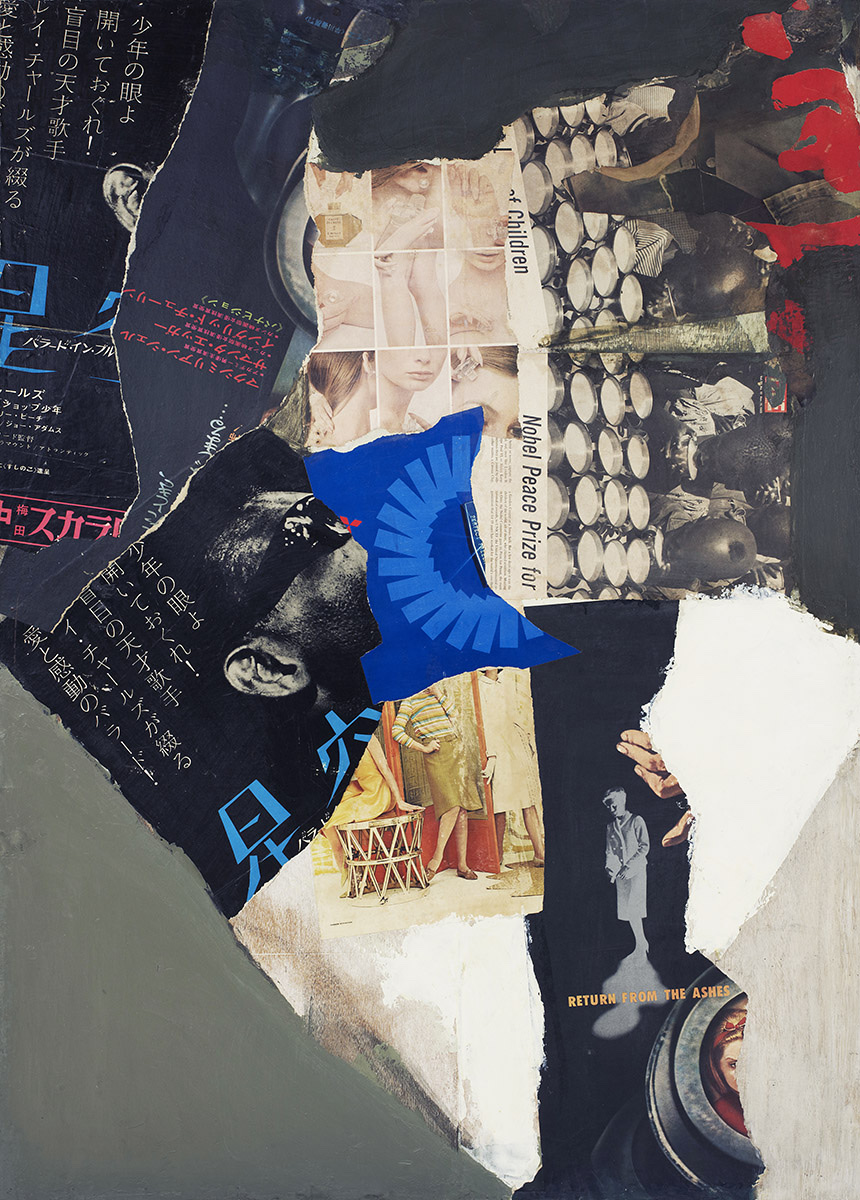
At the age of 86, Mishima continues to create new artworks. She even has solo exhibitions in galleries in Kyoto and Tokyo from time to time. Before the 1970s, Mishima mainly focused on painting and making collage using scraps of promotional flyers, newspapers, and magazines to demonstrate a unique touch of her personality. Despite the growing recognition, Mishima felt something was lacking in her works. “In the 1960s, everyone was obsessed with information. Everyday life was flooded with information from newspapers and magazines. My works were to a certain extent a response to the situation of the time. I was very tight on money, but it didn’t stop me from being overwhelmed by information of shopping mall sales and discounts printed on promotional flyers, newspapers, and magazines. I was anxious and fearful of the situation,” Mishima once shared her thought in an interview.
Her attempt to channel her anxiety through making collage was not satisfactory despite her continuous effort. At that point, the neatly bundled up newspaper that was ready to be discarded caught her attention. The Japanese have a habit of gathering old newspaper at home until the pile gets big enough. Then they would tie them up and throw them away on the recycling day. This common sight suddenly meant a lot to Mishima. People are sometimes reluctant to touch ceramics because of their delicate appearance. However, when putting them together, or making the volume more substantial, ceramic works can exude an unspeakable power. Therefore, she realized ceramic was the medium she had always been looking for.
被繩索紮起來的報紙與漫畫、破爛的紙皮箱、塞滿了報紙的紙箱、被捏成一團的報紙……它們看來都經歷過不少風霜,紙箱破破爛爛的,彷彿在風吹雨打過後,又被曬乾,被放在街頭的轉角處,最後才被抬進藝廊之中。三島喜美代的作品幾何亂真,尤其是給移印了真實報紙內容的,若被隨便放在牆角,定會被當成垃圾。某次美術館展出時,她的作品便曾被清潔工人誤以為是廢物,不小心打破了。對此,她不氣反笑:「我喜歡做讓人覺得『這是搞甚麼鬼』的作品。」
The bundled up newspaper and comics, the ragged carton, a paper box filled with newspaper, the crumpled newspaper… these items all seem to have a long story to tell. The shabby carton could have been long abandoned somewhere. It must have got washed by the rain, blown by the wind, and naturally dried up before being moved into the art gallery. Mishima’s trompe l’oeil can be described as deceitfully real, many would even treat her newspaper print works as actual trash if they were randomly found in a corner of the room. This is not at all exaggerated, in fact, a janitor once accidentally damaged her work when it was being exhibited in a gallery as he mistook it as rubbish. Instead of feeling angry, she found it funny, “I enjoy making artworks that confuse people.”
位於東京大田區的Art Factory城南島,長年設有三島喜美代的作品展,其中一位大型裝置,是她磚頭造成的。在她燒製陶器時,採用的是以磚頭拼成的窯,數十年來,廢棄磚頭堆積如山,她決定將之製成藝術作品。為此,三島美喜代跑到圖書館去,將來1900年至2000年,100年間的新聞印刷出來,製成了模版,印在磚頭之上。她笑言這次覺得她『搞甚麼鬼』的,是她的女兒:「已沒有錢了,還做這種東西。」
In Tokyo Ota area, there is an art space called ART FACTORY JONANJIMA that features a permanent exhibition of Kimiyo Mishima’s works including a massive installation art made of firebricks. Mishima uses kilns built of firebricks to fire her ceramics. After tens of years making ceramic art, she accumulated tons of used bricks. Instead of throwing them away, she decided to turn them into an artwork. For preparation, she went to the library to collect newspaper spanning from 1900 to 2000 and printed them on the firebricks. She jokingly said the most confused person was her daughter who asked, “Why are you making this when we are running out of cash?”
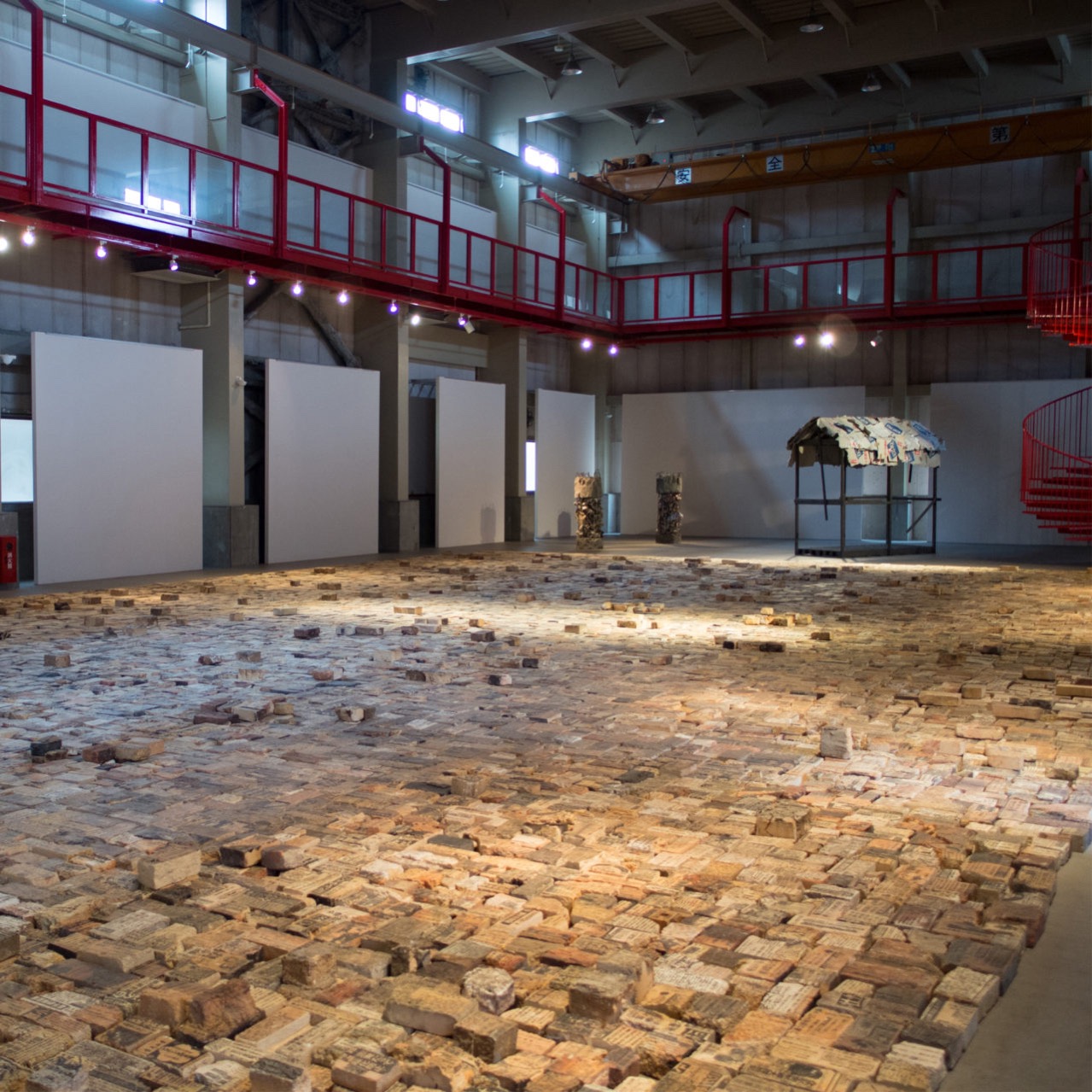
從事創作六十多年,對三島喜美代來說來,這幾年來自己的作品才被真正被看到。2014年Art Factory城南島開幕,展出了她以陶製報紙造成的迷宮,金沢21世紀美術館的館長秋元雄史、華盛頓的Arthur M.Sackler Gallery的策展人特意來參觀,並深被感動;在紐約辦展,Guggenheim Museum及MOMA美術館的策展人對之讚不住口;對她來說都是難能可貴的肯定。她說很慶幸在她正打算把自己大堆作品處理掉時,終於熬出頭來,有地方願意接收。
三島喜美代如此高興,或許不單因為自己的作品被肯定了,而是因為她一直以來沒有計算藝術市場所需,沒理會藝術評論家的眼光,純粹我行我素,為自己而創作的作品,被別人喜歡了。「藝術就像毒品一件,難以甩掉。也因此,家人會很難熬啊!」三島喜美代說。
Mishima has been engaged in the creative industry for more than 60 years. It was only until recent years that her works began to gain popularity. Back in 2014, ART FACTORY JONANJIMA, in their grand opening exhibition, showcased a maze Mishima made using ceramic newspaper. Even Yūji Akimoto (director of 21st Century Museum of Contemporary Art, Kanazawa) and the curator of Arthur M.Sackler Gallery in Washington came to visit and were very impressed. It was also received with high acclaim by the curators of Guggenheim Museum and MoMA. It was a precious recognition to her, especially at the moment when she was on the edge of discarding a great number of her previous artworks. On top of the recognition she got, Mishima was glad to have a venue demonstrating the result of her efforts over the years.
The appreciation made her absolutely delighted, more importantly, those are the arts that she created purely based on her inner calling without having any intention to flatter the public or any art critics. “Art is like drugs that are difficult to refrain from indulging. It’s giving my family a hard time!” said Mishima.
- Up next — Design from inside out
- Previously — To Feel the Timber through Making Your Eating Utensils
